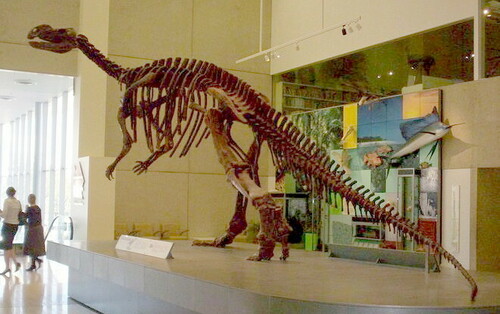
Muttaburrasaurus
Muttaburrasaurus langdoni, with its distinctive nasal crest, thrived in Australia's lush floodplains. This herbivore, adept at grazing on fibrous plants, showcases the diversity of Cretaceous megafauna and highlights the rich prehistoric ecosystems of Gondwana.
2800.0 kg
Weight
Length: 7.01 - 7.92 m; Height: 2.49936 m
Size
Low
Aggression
Characteristics
Muttaburrasaurus langdoni was a herbivorous dinosaur from the Early Cretaceous period, approximately 100 million years ago. Distinctive for its large nasal crest, it roamed in what is now Australia. This dinosaur likely lived in forested floodplains, using its strong beak to feed on tough, fibrous plants.
Distribution Range of the Muttaburrasaurus
Muttaburrasaurus langdoni is a dinosaur species that lived during the Early Cretaceous period, approximately 112 to 98 million years ago. Its fossils have been found primarily in what is now Queensland, Australia. The species is named after the town of Muttaburra, where the first specimen was discovered.
Muttaburrasaurus's Habitat
Environmental Conditions
During the Early Cretaceous, the region that is now Queensland was likely a warm, semi-arid environment with seasonal rainfall. The landscape consisted of floodplains, river systems, and possibly some forested areas. This environment would have supported a variety of plant life, including ferns, cycads, and early flowering plants, providing a food source for herbivorous dinosaurs like Muttaburrasaurus.
Ecological Niche
Muttaburrasaurus langdoni was a large herbivorous dinosaur, likely adapted to browsing on a range of vegetation available in its environment. Its beak and dental structure suggest it could process tough plant material, allowing it to exploit a variety of plant resources. It likely played a role as a primary consumer in its ecosystem, helping to maintain the balance of the plant community and supporting the food web.
Copyright @ Nature Style Limited. All Rights Reserved.
 English
English